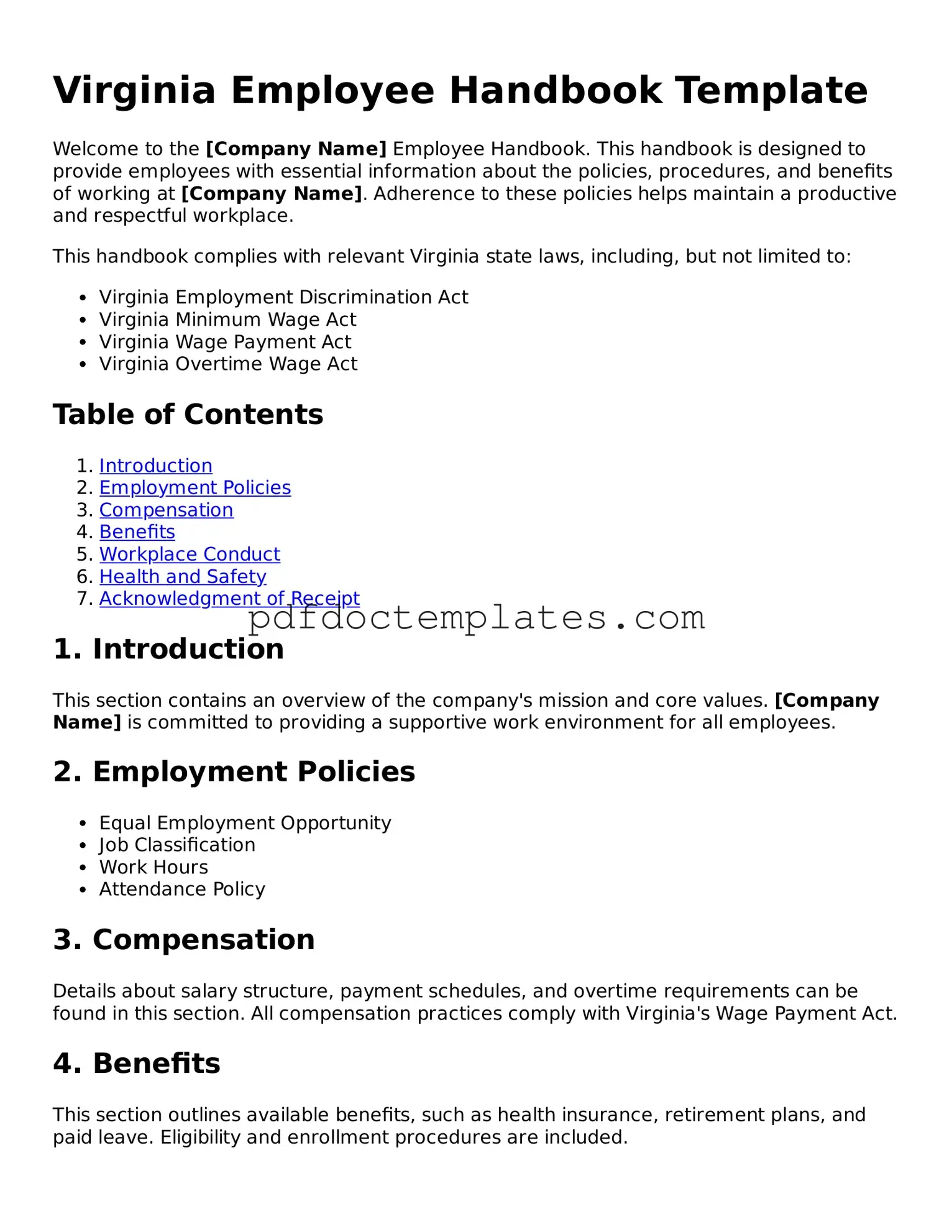Virginia Employee Handbook Template
Welcome to the [Company Name] Employee Handbook. This handbook is designed to provide employees with essential information about the policies, procedures, and benefits of working at [Company Name]. Adherence to these policies helps maintain a productive and respectful workplace.
This handbook complies with relevant Virginia state laws, including, but not limited to:
- Virginia Employment Discrimination Act
- Virginia Minimum Wage Act
- Virginia Wage Payment Act
- Virginia Overtime Wage Act
Table of Contents
- Introduction
- Employment Policies
- Compensation
- Benefits
- Workplace Conduct
- Health and Safety
- Acknowledgment of Receipt
1. Introduction
This section contains an overview of the company's mission and core values. [Company Name] is committed to providing a supportive work environment for all employees.
2. Employment Policies
- Equal Employment Opportunity
- Job Classification
- Work Hours
- Attendance Policy
3. Compensation
Details about salary structure, payment schedules, and overtime requirements can be found in this section. All compensation practices comply with Virginia's Wage Payment Act.
4. Benefits
This section outlines available benefits, such as health insurance, retirement plans, and paid leave. Eligibility and enrollment procedures are included.
5. Workplace Conduct
Professional behavior is expected from all employees. This section defines acceptable and unacceptable conduct, including workplace harassment and discrimination policies.
6. Health and Safety
Employees are encouraged to maintain a safe work environment. Procedures for reporting unsafe conditions or incidents are outlined in this section.
7. Acknowledgment of Receipt
Employees must sign and acknowledge that they have received and understood this handbook. A blank acknowledgment form follows this section for completion.
Thank you for being a part of [Company Name]. We look forward to your contributions and growth within our organization.
